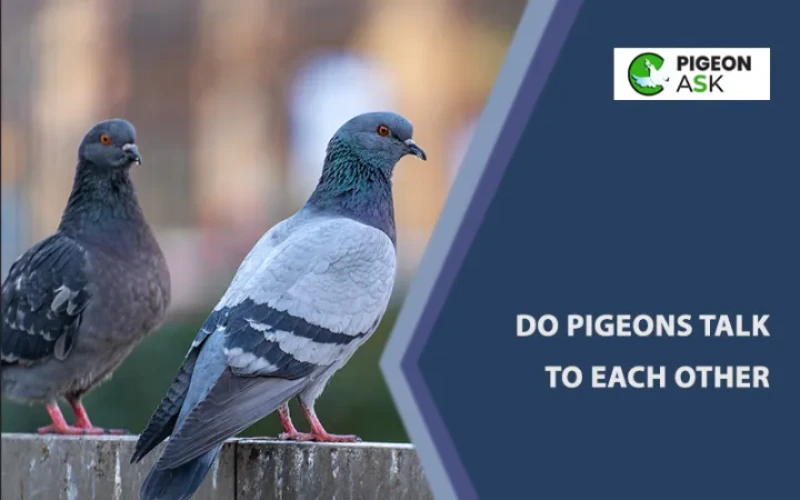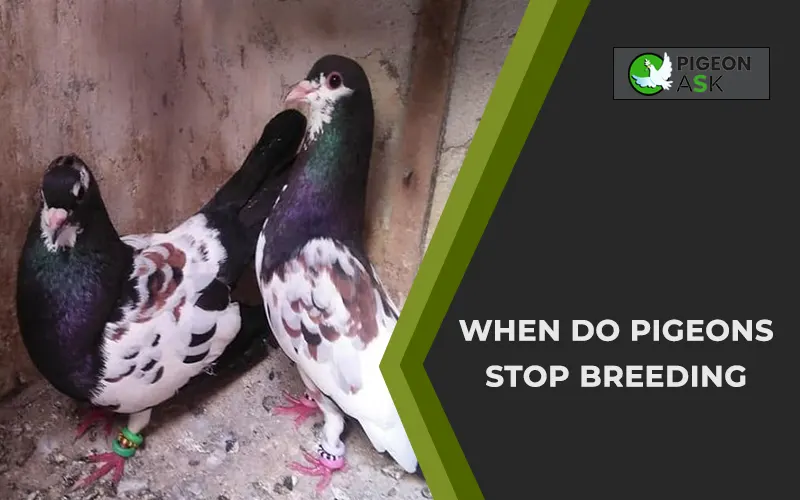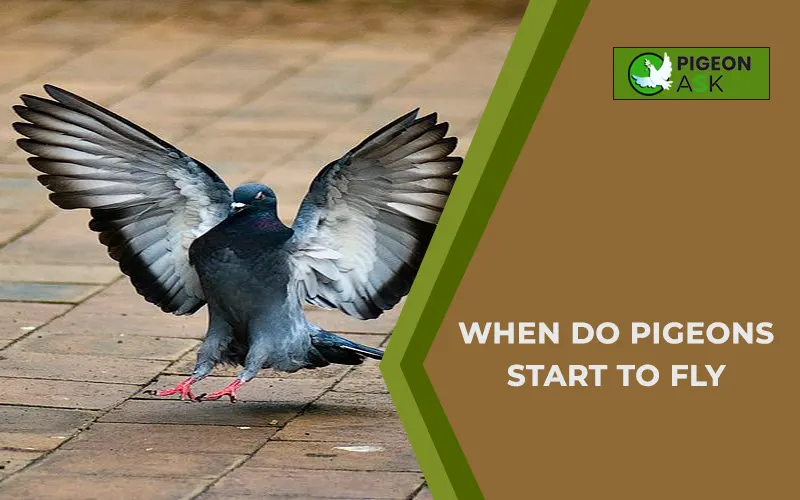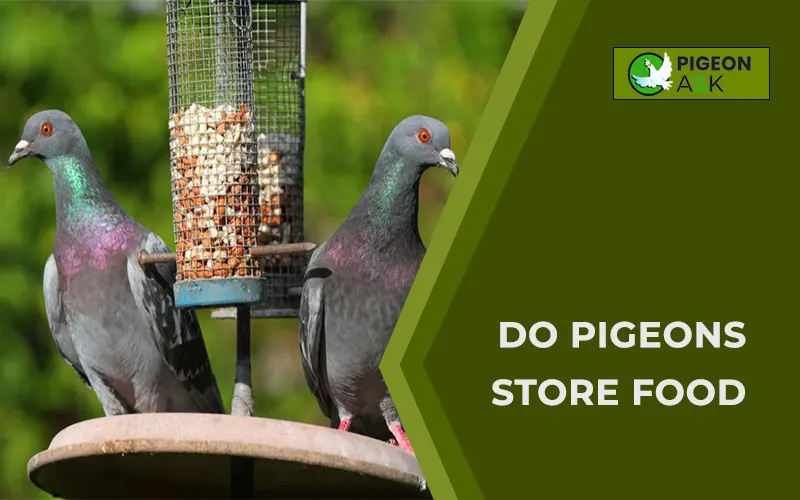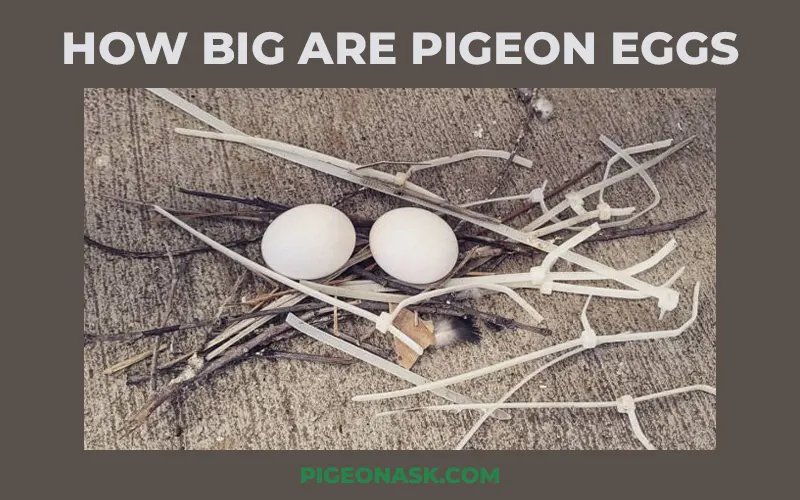Pigeon Habits: Mating And Nesting Habits
Pigeons display diverse and fascinating behaviors. A highly social and domesticated species, they build strong bonds. Their resourcefulness allows them to thrive in urban environments as foragers and scavengers. Some populations migrate vast distances. A few of their most compelling habits are described below for those interested to learn more about these adaptable birds.
Did you know that pigeons recycle? Quite surprising right? You can only be sure of that if you know how they build their nests and why it is important for them to recycle their nests.
Pigeons are social, domesticated, recyclers, migrators, and showcase many other habits; these are just a handful of them. You may learn more about them as I’ve included some of their habits below in detail.
That’s why if you’re interested in reading Pigeon’s Habit, I believe you’re in the right place to learn more-
Nesting Habit
Pigeons include necessities like all other birds while constructing their nests which are food, protection from weather changes, peace, etc. Firstly, I will proceed through uncovering their nesting habits so we can better understand them:
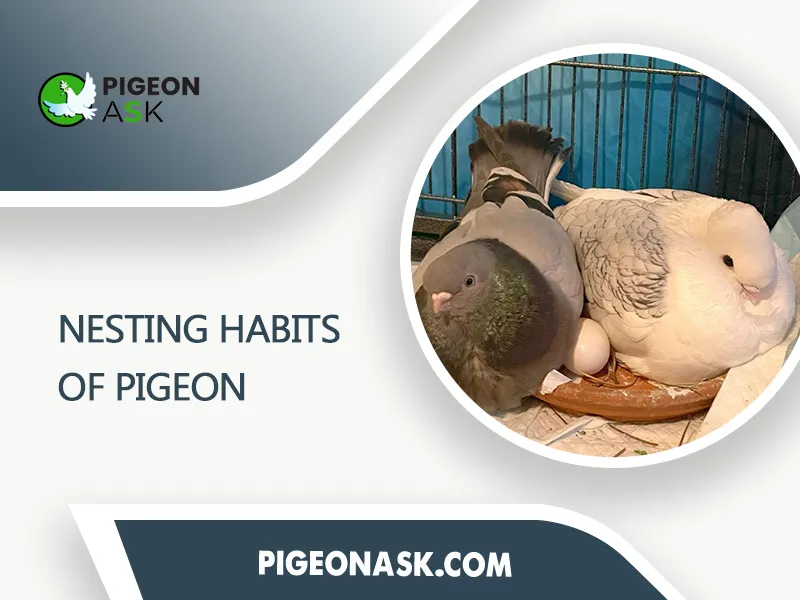
When and why do pigeons create nests?
Well, before jumping into the details, understanding when and what the reasons behind a pigeon building a nest is obligatory.
They do so in the beginning with the seasonality, which is in between spring to early summer. Mainly, these nests are created for bringing up their younger ones.
As the temperature stays stable, daylight stays longer, diversity of food availability makes this duration an ideal time to raise younger pigeons. And the nest is a proper place for young ones to get proper care like feeding and protection from predators.
Plus, after building the nest, the female pigeon sits on it before laying the first egg. The females lay 1 to 3 eggs, but it takes around 18 days to hatch.
Moreover, both male and female pigeons take care of the younger ones. And that’s when nesting habits are mostly seen.
Where do they choose to build their nests?
Because they inhabit different regions, pigeons can be found building their nests in both rural and urban areas. Their nests are distinctive and constructed in areas protected from predators and extreme weather.
In their natural habitat, pigeons often choose to rest on ledges or stones. The purpose is to ensure the safety of all individuals, once again.
Because of their familiarity with man-made structures, such as buildings, rooftops, and bridges, they often choose to construct their nests on such items in urban areas.
Typically, their habit is to choose quiet areas to construct their nests.
What does a pigeon nest look like?
After grabbing up a stick, the male pigeon brings it to the female to gauge her reaction. If so, the male pigeon will construct the nest by placing the stick beneath the female.
The stems and leaves eventually create a bowl shape in the nest after several repetitions of the process.
Do pigeons recycle their nests?
Definitely, they do. Year after year, they become habituated to using the same nest, but they do add new things to it to make it stronger.
Why do they do it? Because it’s easy and saves them time and energy. Also, since it’s already a safe place to live, why change the place? Instead, rebuild it.
Another reason for their recycling is that if the weather changes quickly, the eggs and chicks will still be warm if the old one is used.
Courtship And Mating Habit
Well, you’ll be amazed to hear that pigeons are monogamous, so they mate for life! Here’s a breakdown of their unique breeding habit:
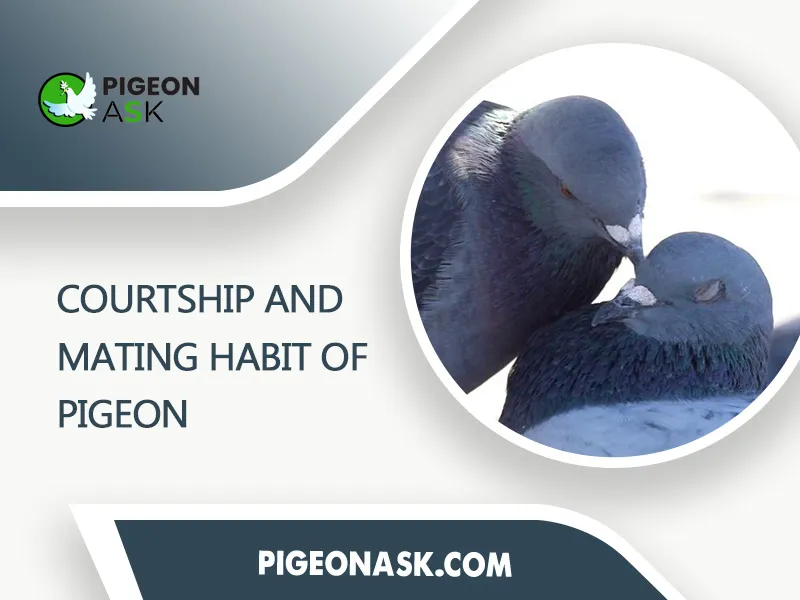
How do pigeons mate?
Pigeons engage in an intriguing dance known as courting before they mate. In order to attract a female, males will frequently chirp loudly, swing their tails, and pump out their upper chests.
Then comes the mating technique of pigeons, unique among birds: a cloacal kiss. As their internal organs are hidden and reproductive, digestive, and excretion processes are all carried out through a singular aperture known as the cloaca.
During mating, the male covers up with the female and mounts her from behind. The process of fertilization is accelerated when the sperm sacs of the male and female are briefly in contact with each other.
Moreover, in order to fertilize a female’s eggs, sperm must first pass through her cloaca and into her ovary.
It’s quite interesting to see that pigeons don’t simply lay eggs after a single mating. Hence, they may kiss their cloacae multiple times, likely to ensure that the eggs are fertilized during mating season.
What Is the Feeding Habit of a Pigeon?
This domesticated bird is quite adaptable when it comes to their diet which lets them survive in both urban and rural life. Starting with diverse seeds, fruits, and vegetables, they eat insects, worms, snails, etc.
Have you ever wondered why in holy places like mosques premises have seeds and grains spread around? It’s for the pigeons! Any kind of seed like corn, wheat, barley, etc. is a happy meal for pigeons.
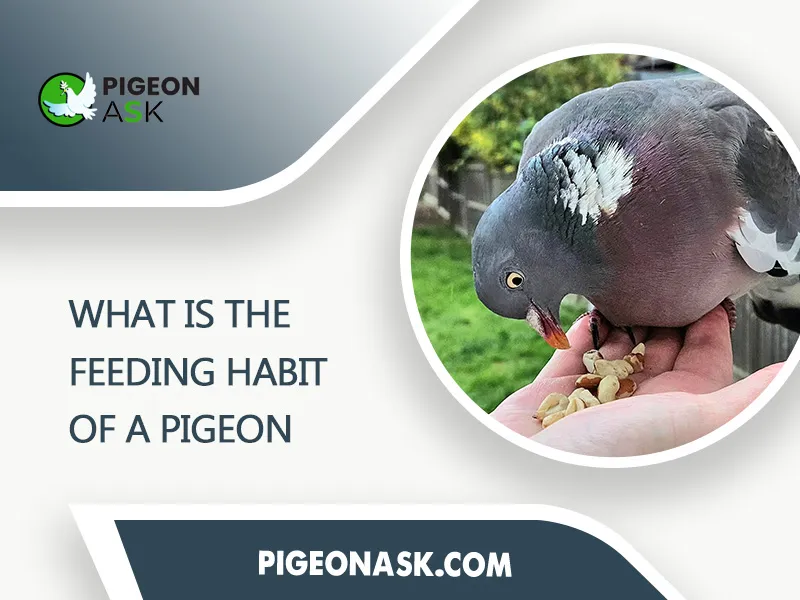
Apart from seeds, they eat fruits and vegetables too! Such as berries, apples, grapes, carrots, cherries, etc. are often eaten by them.
Similarly, they sometimes eat insects and worms to get a protein boost. Like earthworms, snails are eaten by them very casually anytime they face a scarcity of food.
Lastly, you can distribute your leftovers to them too. Either your bread scraps or any other food leftover is enjoyed by your feather friend easily. Read this article to know more about their eating habits “Wondering What Pigeons Crave? Discover Ultimate Pigeon’s Food!”
What Is the Social Habit of a Pigeon?
Till now I’ve talked about pigeon nesting habits or eating habits, but all these are interlinked with its social habits. As this bird is a social creature, it loves to stay around its members and humans.
Pigeons love to fly miles after miles around in groups which gives them protection from predators. Moreover, it helps them to spread information about food availability or any danger rapidly.

In front of other birds, they need to ensure their dominance, which can only be possible if they remain in a group.
Because of sharing and living as a team, a wonderful team is formed with other members of their flock. They love to help each other in building nests or help each other from predator attacks.
Moreover, as they are sociable birds, they have adapted to humans too. All of these have been possible because of their nature of being social to other creatures.
What Are the Sleeping Habits of Pigeons?
Even though pigeons seem to be constantly singing and strutting, they actually sleep quite a bit. Their sleeping habits are intriguing, and they differ from ours in some captivating ways as well.
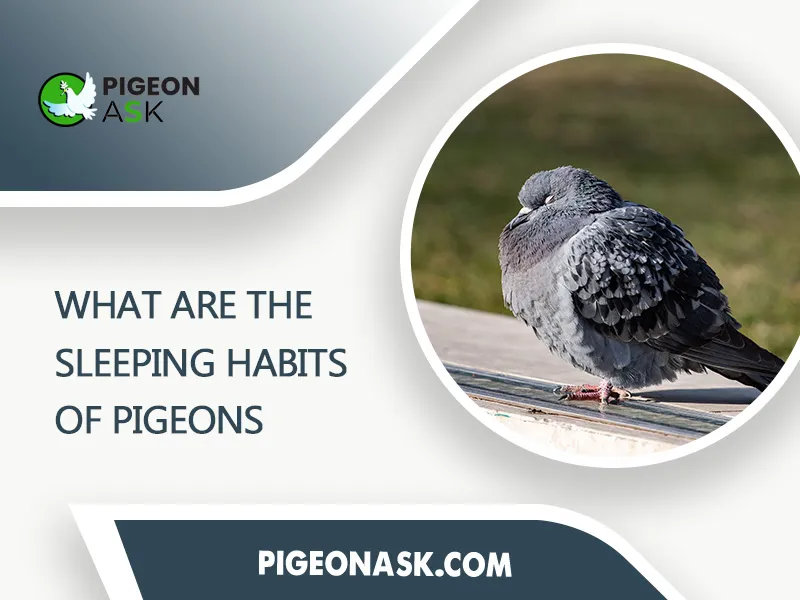
A diurnal bird is one that is more active during the day and rests at night, pigeons are no exception. In truth, they do snooze for little periods.
Besides, there is a direct correlation between the season and the sleep-wake cycle as well. It is possible for them to go to sleep while keeping half of their brain active. This allows them to relax and ensures that they are alert.
What does the pigeon’s sleep posture look like?
Pigeons mostly sleep on flat surfaces or in abandoned buildings. But until the breeding season or while raising the pigeon they do not sleep in the nests.
Through fluffing up their feathers and nestling their heads beneath one wing is a common posture for them to sleep to keep them warm.
How Do Pigeons Develop Their Migrating Habits?
Well, pigeons are not naturally migratory birds, but some species are exceptional. The band-tailed pigeon is a migratory species of pigeon. They migrate north in the spring and south during the fall and winter in search of better habitats.
As we know, pigeons are exceptionally good navigators, so they flock together following the landmarks they’ve set earlier. Sometimes they take a break for rest and then again restart their journey.
What Is the Flying Habit of Pigeons Like?
The fact that pigeons can fly rather quickly is a major factor in their flying habits. Despite their plumpy bodies, they can fly faster.
Because of their mastery of rising air waves, pigeons are able to fly effortlessly and with little effort. They can reach speeds of up to 90 mph while flying vertically.
Moreover, pigeons don’t require a lot of runway space because they are excellent at landing vertically. Their light bones allow them to lift themselves through the air with comfort.
Pigeons’ habits are quite similar to other birds but still have some of their own unique features which makes them more adaptable than others. Their habits define why they build their nests just before laying eggs. Moreover, it signifies their living and traveling in a flock as it keeps them safe and secure.
However, this article “Pigeon Habit” is a medium to guide you in-depth of each of their habits. Hope you’ve enjoyed it.
References
- https://www.allaboutbirds.org/guide/Rock_Pigeon/lifehistory
- https://www.pigeonpatrol.ca/the-pigeon-nest-pigeon-nesting-habits-and-behaviors/
- https://journals.plos.org/plosone/article?id=10.1371/journal.pone.0166572
- https://www.oaklandzoo.org/animals/speckled-pigeon

